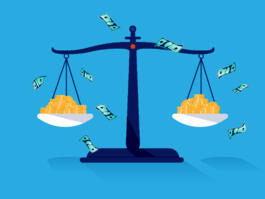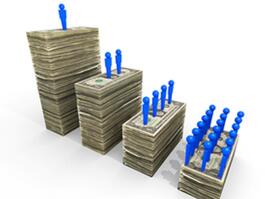Middle Class Aided Its Own Decline
A Commentary By Froma Harrop
This was the Year of the Middle Class -- as in, its falling incomes, loss of job security and anger. The global economic forces fueling the decline, such as foreign competition and computers, have been well reported. But what about cultural factors? Is the middle class going down partly because it stopped acting middle class?
For those who remember the American middle's golden era of 40 years ago -- or see it reconstructed on TV dramas -- the cultural losses are pretty shocking. The middle managers in "Mad Men" returned to orderly homes with tidy children, even as their personal lives spun into chaos. While comfortable, their houses were modest by today's McMansion standards. That's because they were living within their means.
On "Pan Am," the passengers in economy class are served hot meals on trays. The flight attendants (stewardesses then) deal with neatly dressed travelers in all classes. And while they have their problem passengers, they do not do daily battle against swinish slobs with money.
Frugality used to be a central middle-class theme. What happened to it? We now read the stories of middle-class families in free fall because they lost a job and had no savings. Back in the mists of time, there was a rule about setting aside six months of salary to cover a possible job loss. Not only did the middle class stop saving, but it famously borrowed to maintain extravagant living beyond what its stagnating salaries could support.
Middle-class Americans used to throw "mortgage burning parties," when, after 30 years, they finally paid off their home loans. They understood as long as they had a mortgage, they were not full homeowners.
But come the housing bubble of the last decade, middle-class people no longer viewed their rising home prices as mere whipped cream on a prudent savings plan. They saw a higher value as the main course to be quickly devoured by borrowing against it. Now Americans' equity in their homes (the home's value minus mortgage) is half what it was in 2006.
Many middle-class parents of the '50s and '60s well remembered the privations of the Great Depression. Thus, they raised their children to be survivors in an uncertain world, not as princes and princesses who can do no wrong. They understood the importance of education and manners. They regarded teachers as authorities to be respected. (Observe the strict supervision of the children in "Mad Men.")
Girls from the middle class -- or from what once was -- now scamper through the mall baring cleavage, and wearing thick eyeliner and outrageous heels. Their intellectual interests seem nil, and their apparent need to push their sexual availability on boys depresses the feminist soul.
The public square was the meeting ground for all classes. But while the rich could always retreat to private splendor, the middle class needed its Main Streets for civic engagement.
And it was the middle class that abandoned its downtown retailers for the big box discounter filling the shelves with the cheapest goods from Asia. The factories its members worked in closed. And the neighborhood store that sponsored the local baseball team vanished.
Brands of detergent, scouring powder and other household staples were once a shared experience of all but the poorest classes. The consumer products giant Procter & Gamble is now coming out with a cheaper brand of soap for the middle class, The Wall Street Journal reports. On the high end, P&G is selling a fancy package of Olay-Pro-X skin care basics for about $60.
Can the losses, economic and cultural, be reversed? Perhaps, but that would require a very different political and social conversation. We may have a theme for 2012.
COPYRIGHT 2011 THE PROVIDENCE JOURNAL CO.
DISTRIBUTED BY CREATORS.COM
See Other Political Commentary.
See Other Commentaries by Froma Harrop.
Views expressed in this column are those of the author, not those of Rasmussen Reports. Comments about this content should be directed to the author or syndicate.
Rasmussen Reports is a media company specializing in the collection, publication and distribution of public opinion information.
We conduct public opinion polls on a variety of topics to inform our audience on events in the news and other topics of interest. To ensure editorial control and independence, we pay for the polls ourselves and generate revenue through the sale of subscriptions, sponsorships, and advertising. Nightly polling on politics, business and lifestyle topics provides the content to update the Rasmussen Reports web site many times each day. If it's in the news, it's in our polls. Additionally, the data drives a daily update newsletter and various media outlets across the country.
Some information, including the Rasmussen Reports daily Presidential Tracking Poll and commentaries are available for free to the general public. Subscriptions are available for $4.95 a month or 34.95 a year that provide subscribers with exclusive access to more than 20 stories per week on upcoming elections, consumer confidence, and issues that affect us all. For those who are really into the numbers, Platinum Members can review demographic crosstabs and a full history of our data.
To learn more about our methodology, click here.



